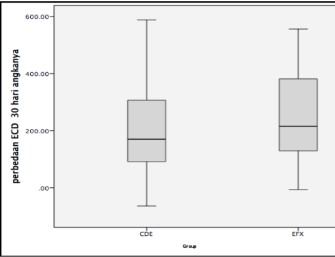Dry Eye Profile in Diabetes Mellitus Patients
DOI:
https://doi.org/10.35749/journal.v48i1.100497Keywords:
Dry eye, Diabetic, Schirmer, Tear Break Up Time, Ocular Surface Disease IndexAbstract
Aim: To evaluate dry eye syndrome patients based on meibomian gland evaluation, tear break up time test, Schirmer test, and ocular surface disease index form the diabetic mellitus patients.
Materials And Methods: A Cross Sectional Study used to determine the profil of dry eye Syndrome on 15 diabetic mellitus patients in Eye center Hasanuddin University from December 2019 until February 2020
Results: 15 participants have included in this study. From the meibomian gland evaluation, there are 10 participants with mild dry eye. From the tear break up time test, there are 10 participants with dry eye. From the Schirmer test, there are 8 participants having dry eye on Schirmer 1 test and 8 participants with dry eye on Schirmer 2 test. And, from the ocular surface disease index, 11 participants with severe dry eye disease were identified.
Conclusion: Patients with diabetes mellitus have a high potential for dry eye. Dry eye screening examinations such as tear break up time and Ocular Surface Disease Index (OSDI) are recommended to use in patients with diabetic retinopathy.
Downloads
References
Tong L, Waduthantri S, Wong TY, et al. Impact of symptomatic dry eye on vision related daily activities: the Singapore Malay Eye Study. Eye (Lond). 2010;24(9):1486–1491
Waris, Syed Ali Nasir. Balaji, R.S. Naveen. Huda, Rubina. To Study Prevalence of Dry Eyes in Diabetic Patients. Indian Journal of Clinical and Experimental Ophthalmology, January-March, 2019;5(1):40-43
Craig. Jenifer P, Nelson. J Daniel. et al. TFOS DEWS II Report Executive Summary. The Ocular Surface xxx (2017) 1-11
Dry Eye Syndrome on American Academy of Ophthalmology, Chapter 8 Extrernal Eye Disease
Lee, A J. et al. Prevalence and risk factors associated with dry eye symptoms: a population based study in Indonesia. Br J Ophthalmol. 2002 Dec;86(12):1347-51. doi: 10.1136/bjo.86.12.1347.
Vislisel, Jesse MD. Tear Breakup Time (TBUT). University of IOWA Health Care: February 06, 2015
Li, Na. Deng, Xin-Guo. He, Mei-Feng. Comparison of The Schirmer I Test With And Without Topical Anesthesia for Diagnosing Dry Eye. Journal of Opthalmology Press. Accepted on June 27, 2012.
Schiffman, Rhett M. MD. MS. Christianson, Murray Dale, MD. et al. Reliability and Validity of The Ocular Surface Disease Index. Arch Ophthalmology. 2000; 118(5):615-62
Chhadva, Priyanka. Goldhardt, Raquel. Galor, Anat. Meibomian gland disease: the role of gland dysfunction in dry eye disease. Ophthalmology.2017, Nov; 124(11): S20-S26
Dibajnia, Parvin. Mohammadinia, Mohadeseh. et al. Tear Film Break-Up Time in Bipolar Disorder. Iran J Psychiatry; 7(4): 191-193
Kesarwani, Divya. Rizvi, Syed Wajahat Ali. Khan, Adeeb Alam. et al. Tear film and ocular surface dysfunction in diabetes mellitus in an Indian population. Indian Journal of Ophthalmology: April 2017 - Volume 65 - Issue 4 - p 301-304.
Nadeem, Hina. Malik, Tayyaba Gul. Mazhar, Abdullah. Ali, Aali. Association of Dry Eye Disease with Diabetic Retinopathy. Journal of the

Downloads
Published
Issue
Section
Categories
License

This work is licensed under a Creative Commons Attribution-NonCommercial-ShareAlike 4.0 International License.

